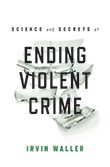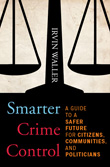In the USA, 30% of persons, who were victims of crime that involved a weapon or injury, did not report the victimization to police in the period from 2006-2010. 65% of victims of rape and sexual assault did not go to the police. These statistics seriously question whether US law enforcement is doing enough to meet the needs of policing to have victims report, let alone whether policing has enhanced its response enough to meet the needs of victims.
Smart police leadership have the tools at hand to enhance their response to victims of crime. These are set out in plain English in Chapter 3 of Rights for Victims of Crime. The International Association of Chiefs of Police has packaged these tools and made them available on its website. It shares these in 3 sections which make up a well thought out and field tested strategy to enable leadership to enhance their response to victims of crime without a huge investment of funds.
The first section introduces the benefits and responsibilities with a focus on training, and performance monitoring. It identifies critical needs of victims as well as ways for law enforcement to partner with community groups to meet those needs.
The second section is about implementation and so provides instructive material on ways to develop an action plan, measure success and sustain the effort. In sum, it shows how to adapt principles to the realities of the 21st Century police service.
The third section provides sample materials, including mission statements, partnership agreements, steps for staff buy-in, performance appraisals, brochures for crime victims, and so on.
The National Research Council report on the effectiveness of policing stressed that approximately two thirds of the resources of policing in the USA are dedicated to responding to 911 calls. At one time, it was believed that quick response would lead to catching more criminals but many victims who report to the police do not necessarily do so while the crime is in progress. So smart policing must look to a broader range of strategies that reduce violence, including proven multi-sector and problem oriented policing.
So, 911 rather than crime reduction or response to victims dominates 21st Century policing. Modern police agencies have highly skilled personnel and sophisticated communications tools with great potential, who are under-utilised as efficient responders to 911.
So the challenge is how to shift from efficient response to 911 to effective response to victims. The IACP provide the keys to shifting police patrol from efficiency numbers to quality of response where the responding officer listens more and provides information and referral to services.
Nevertheless 60 to 70 percent of the crimes known to the police are reported initially by crime victims. So victims are important to police work. For victims, the way that they are treated by the police may be an important determinant of their ability to cope with the trauma and after-effects of the crime.
The IACP strategy refers to independent surveys of victims who report to the police (as well as those who do not) to measure the extent to which their core needs are met. This type of accountability is important to improving the services.
In addition to the IACP strategy, there is a particular need to focus on the special needs of women and children impacted by violence. Significant progress has been made by law enforcement to provide protection to victims of domestic violence. Hiring of more female officers who are at the front line of policing must help. But more is needed to develop protocols that will encourage more women to report in a way that meets the women´s needs.
I have put the IACP initiative in the context of the growing consensus about the needs of crime victims, international standards and ways to adapt best practices in the book Rights for Victims of Crime.

